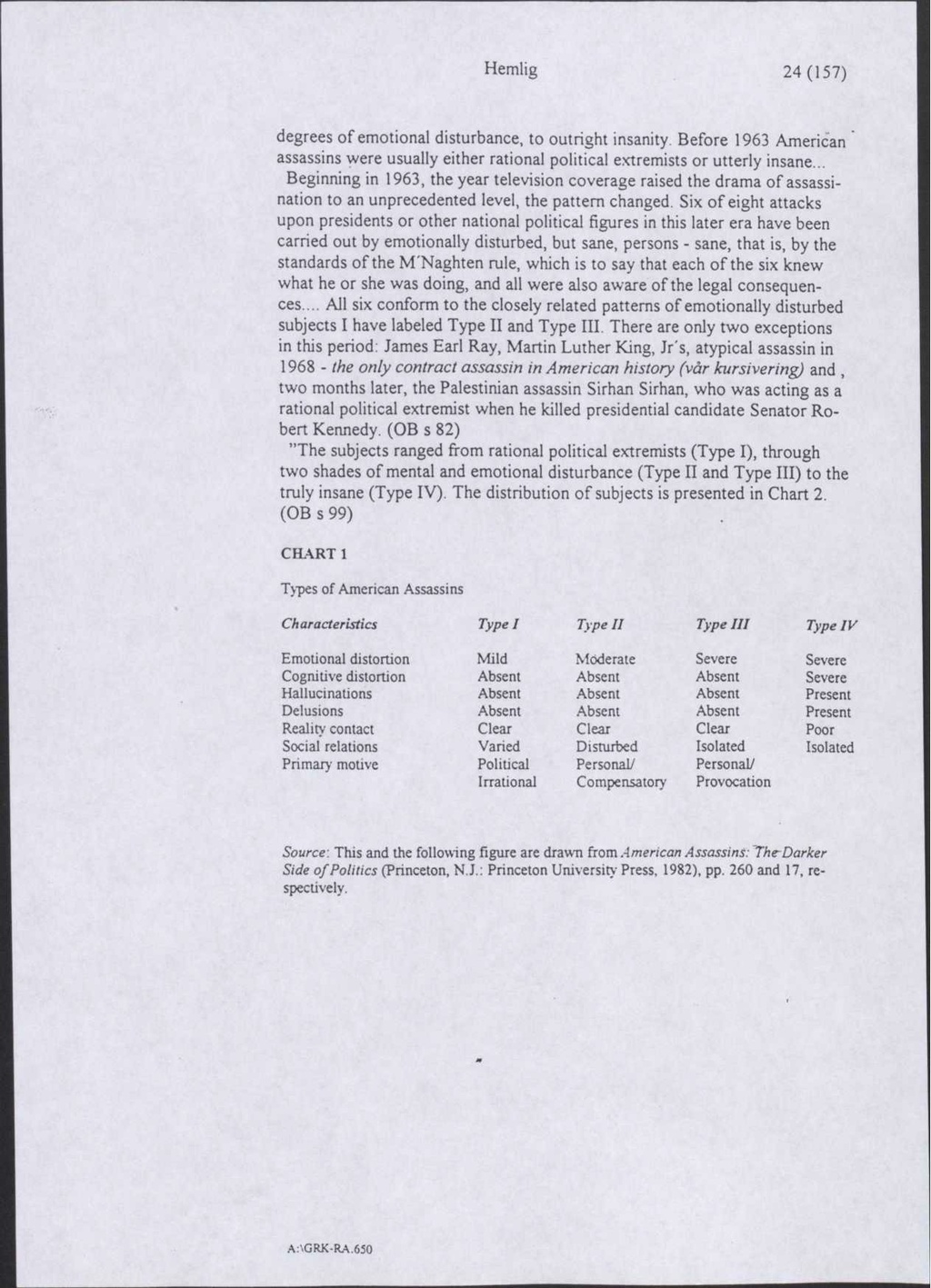degrees of emotional disturbance, to outright insanity. Before 1963 American assassins were usually either rational political extremists or utterly insane...
Beginning in 1963, the year television coverage raised the drama of assassination to an unprecedented level, the pattern changed. Six of eight attacks upon presidents or other national political figures in this later era have been carried out by emotionally disturbed, but sane, persons - sane, that is, by the standards of the M-Naghten rule, which is to say that each of the six knew what he or she was doing, and all were also aware of the legal consequences.... All six conform to the closely related patterns of emotionally disturbed subjects I have labeled Type II and Type III. There are only two exceptions in this period: James Earl Ray, Martin Luther King, Jr's, atypical assassin in 1968 - the only contract assassin in American history (vår kursivering) and, two months later, the Palestinian assassin Sirhan Sirhan, who was acting as a rational political extremist when he killed presidential candidate Senator Robert Kennedy. (OB s 82)
"The subjects ranged from rational political extremists (Type I), through two shades of mental and emotional disturbance (Type II and Type III) to the truly insane (Type IV). The distribution of subjects is presented in Chart 2. (OB s 99)
CHART 1
Types of American Assassins
Characteristics
Type 1
Type II
Type III
Type IV
Emotional distortion Cognitive distortion Hallucinations Delusions Reality contact Social relations Primary motive
Mild Absent Absent Absent Clear Varied Political Irrational
Moderate Absent Absent Absent Clear Disturbed Personal/ Compensatory
Severe Absent Absent Absent Clear Isolated Personal/ Provocation
Severe Severe Present Present Poor Isolated
Source: This and the following figure are drawn from American Assassins: The Darker Side of Politics (Princeton, NJ: Princeton University Press, 1982), pp. 260 and 17, respectively.
